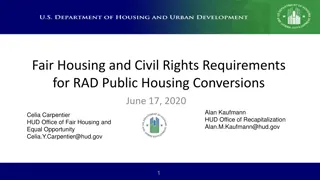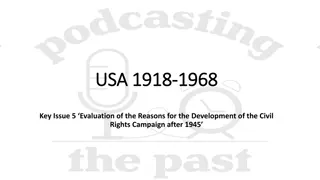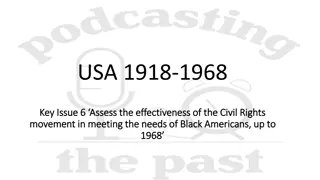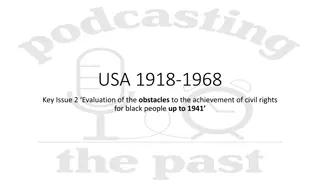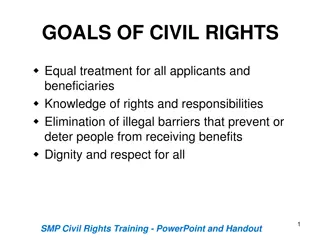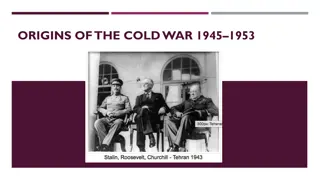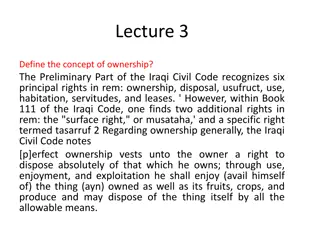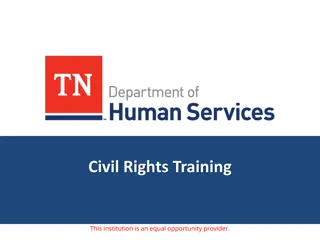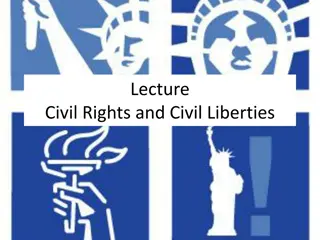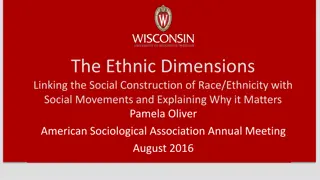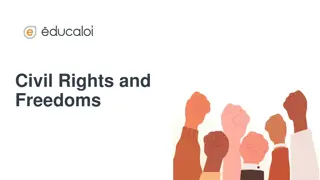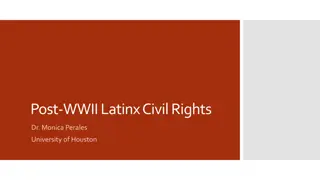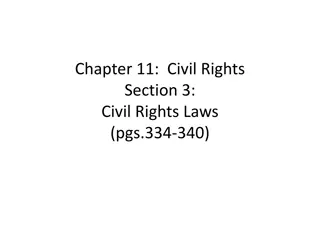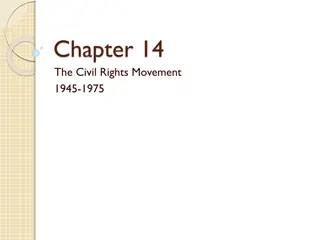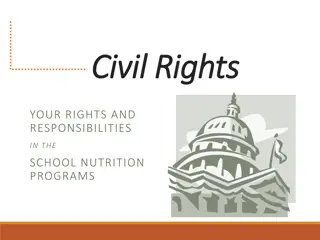Civil Rights and Social Movements in the Americas Post-1945: An Overview
Explore the history, challenges, and achievements of civil rights and social movements in the Americas post-1945. Learn about the struggles faced by African Americans, Indigenous peoples, feminist movements, Hispanic Americans, and youth culture protests. Discover pivotal moments such as the Montgomery Bus Boycott, legal challenges to segregation, and the role of organizations like the NAACP in the fight for equality.
Download Presentation

Please find below an Image/Link to download the presentation.
The content on the website is provided AS IS for your information and personal use only. It may not be sold, licensed, or shared on other websites without obtaining consent from the author. Download presentation by click this link. If you encounter any issues during the download, it is possible that the publisher has removed the file from their server.
E N D
Presentation Transcript
Civil Rights and Social Movements in the Americas (post-1945) An introduction to Unit 7 and EA3
Unit 7: Civil Rights and Social Movements in the Americas post-1945 (EA3) Introduction: This section examines the origins, nature, challenges, and achievements of civil rights and social movements after 1945. Causes of some of these movements may be pre-1945. These movements represented the attempts to achieve equality for groups that were not recognized or accepted as full members of society, and they challenged established authority and attitudes. For each of the following movements, origins, nature, challenges and achievements will be the focus. African Americans and the civil rights movement: origins, tactics, and organizations; the US Supreme Court and legal challenges to segregation in education; ending of segregation in the south. Role of MLK, the rise of radical African American activism (Black Panthers, Black Power, Malcolm X) & the role of government in the movement. Indigenous peoples Feminist movements Hispanic American movement in the U.S. (Cesar Chavez) Youth culture and protests of the 1960 s-1970 s: the emergence of a counter-culture
For African Americans, the path from slavery to full civil rights was long and difficult. Several developments during the 1950s and 1960s legally guaranteed them full citizenship: Development: Protests Montgomery Bus Boycott sit-ins 24th Amendment Civil Rights for African Americans Development: Johnson Presidency Development: Warren Court Brown v. Board of Education Voting Rights Act of 1965 Civil Rights Act of 1964 3 Contents
Discussion: Intro to Civil Rights Read pages 130-132 and be ready to discuss the following: 1. What is the NAACP? 2. To what extent did the Reconstruction Era create equal rights for African Americans? 3. What are Jim Crow Laws? 4 Contents
NAACP The NAACP became one of the most important African American organizations of the twentieth century. It relied mainly on legal strategies that challenged segregation and discrimination in the courts. 20th Annual session of the N.A.A.C.P., 5 Contents
NAACP Historian and sociologist W.E.B. Du Bois was a founder and leader of the NAACP. Starting in 1910, he made powerful arguments protesting segregation as editor of the NAACP magazine The Crisis. Dr. W.E.B. DuBois 6 Contents
NAACP After World War II, the NAACP s campaign for civil rights continued to proceed. Led by Thurgood Marshall, the NAACP Legal Defense Fund challenged and overturned many forms of discrimination. Supreme Court Justice Thurgood Marshall 7 Contents
To what extent did the Reconstruction Era create equal rights for African Americans? Rights Lack of Equality 8
Effects of Reconstruction Rights 13th Amendment: abolished slavery 14th Amendment: established citizenship and stated nor shall any state deprive any person of life, liberty, or property; nor deny to any person within its jurisdiction equal protection of the laws. 15th Amendment: right to vote regardless of race, color, or condition of previous servitude. Lack of Equality 1877: Federal troops withdrew from southern states states now controlled application and enforcement of Reconstruction laws Jim Crow Laws Popularity in KKK membership Legal/Prison system Disenfranchisement 9
The Great Migration Between 1916 and 1920, half a million African Americans left the south in search of jobs, better opportunities, and to escape racism. This caused Northern urban centers to become more populated. Some northern whites were mad they had to share power and opportunity with African Americans and eventually led to the 1920 s race riots.
Segregation Segregation became common in Southern states following the end of Reconstruction in 1877. Drinking fountain on county courthouse lawn, Halifax, North Carolina; 12 Contents
Segregation Enforced by Jim Crow Laws: Required all public areas to enforce racial segregation between white and colored areas Named after a 1830 s African American character - slave who embodied negative stereotypes of African Americans. 13 Contents
Segregation African Americans had separate schools, transportation, restaurants, and parks, many of which were poorly funded and inferior to those of whites. Over the next 75 years, Jim Crow segregation dominated U.S. society and politics. Entrance of movie house for African Americans on Saturday afternoon, Belzoni, Mississippi Delta, Mississippi 14 Contents
HOMEWORK (due Monday): pgs. 129-139 Show evidence of your reading! Does NOT need to be full, detailed notes/annotations keep it simple! Summarize the main idea in TWO SENTENCES!!!
Civil Rights Groups 1. NAACP National Association for the Advancement of Colored People Concentrated on desegregation of schools & brought the case to the Supreme Court 2. SCLC Southern Christian Leadership Conference Led by MLK and focused on nonviolent protests 3. SNCC Student Nonviolent Coordinating Committee Student organization that practiced civil disobedience (nonviolent resistance of unfair laws) 4. CORE Congress of Racial Equality Organized the Freedom Rides; focused on equality for all


